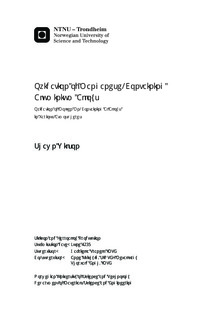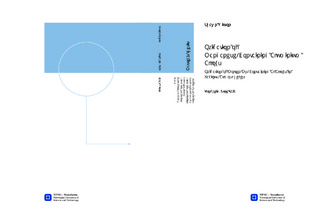| dc.description.abstract | An oxidation study was performed on 99.99% Al, Al1%Mn and Al5%Mn materials, both ina thermogravimetric furnace, and in a muffle furnace. The mass gain behaviour for thesematerials was studied and compared for dierent temperatures and surface preparations,and was compared to previous work on Al1Mn.Curve fitting was used with the thermogravimetric data in an attempt to develop a math-ematical model to describe oxidation in the Al1%Mn materials, but a satisfactory modelcould not be found.The oxidized materials were then analyzed in the Scanning Electron Microscope usingEDS and Auger microprobe analysis, both for chemical composition and to analyze thestructure of the oxide that was formed.The main findings from the thermogravimetric work are as follows:1. Error analysis showed that the mass measurement errors were at least two orders ofmagnitude smaller than the mass measurements, so any dierences between sampleswas due to dierent oxidation behaviour in the sample.2. There was inconsistent oxidation behaviour for the Al1Mn surface-cleaned TGAsamples; for six identical samples and experiments, ve samples showed comparableresults, while one sample showed much larger mass gain.3. Sample preparation has a large inuence on oxidation behaviour in the mue fur-nace.4. Mn content has an inuence on oxidation behavior; there was a trend of increasingoxidation with increasing Mn content in the mue furnace samples.The main ndings from the SEM analysis of the oxidized 99.99% Al, Al1%Mn andAl5%Mn materials are as follows:1. The oxides formed on the Al1Mn and Al5Mn materials were thicker and dierentthan those found on 99.99% Al2. The oxides formed on the Al1Mn and Al5Mn materials did not contain Mn oxides3. The oxides formed on the Al1Mn and Al5Mn materials had small particles of Mnmetal completely surrounded by Al2O34. Mn-rich particles were found in the interior of the Al1Mn and Al5Mn samples5. Small clusters of Mn metal were found among the Al2O3 particles on the surface ofthe Al1Mn and Al5Mn samplesGlow Discharge Optical Emission Spectroscopy showed that there was no measurable Mnon the surface of an as-extruded Al1Mn strip, and the Mn was decient to a depth ofsome 100nm from the surface. A similar Al1Mn extruded strip that had 50m of thesurface mechanically removed also did not contain Mn on the surface, and had a similarMn prole to the as-extruded strip.A qualitative physical model of oxidation was suggested, based on thermogravimetricdata. | nb_NO |

